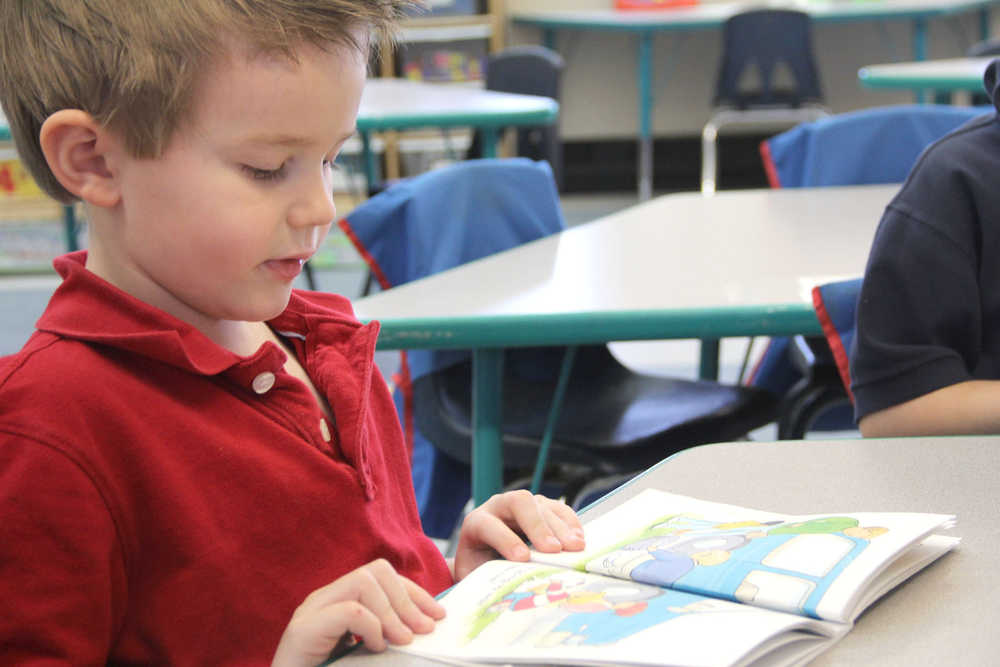Nearly all the Aurora Borealis Charter School second graders shot up their hands when asked to volunteer to take turns reading out loud in a group of six.
Principal Larry Nauta said eagerness to read is common in students across all grade levels. The school, which started 17 years ago makes reading a priority, he said.
“Without reading you’re going to struggle,” he said.
Kindergartners are reading at a minimum of a first grade level weeks before the end of the 2013-2014 school year.
Statistics for the 2012-2013 school year saw 79 percent of Aurora Borealis students reading in the advanced category and 19 percent at proficient level. Nauta said these numbers are typical for Aurora. Comparatively, the district saw 44.5 percent of students reading at the advanced level and 43.3 percent at the proficient level. The Alaska statistics for readers were 35.6 percent at the advanced level and 42.7 percent at the proficient level.
Aurora Borealis teacher Julie Ball substantially modified an existing reading program that advances students’ reading levels, kindergarten teacher Luke Oliver said. The program takes a phonics-based approach to teaching reading that begins the first week of the school year in kindergarten.
He said students learn two letter sounds a day and are tested after each pair. About the second month of the school year, he starts introducing words by writing them on the board and sounding them out with students. After that the students begin writing and Oliver begins a spelling program followed by a reading program beginning around February.
A kindergarten group read the illustrated book “We All Fall for Apples” by Emmi S. Herman on April 15. First Oliver read it to the students and asked comprehension questions along the way. Then the students read the book out loud together. The group, one of three in the classroom, then rotated to a different table and read the book out loud to the new adult reading leader.
A few doors down first graders were also broken into reading groups based on similar reading levels. Books ranged from fiction to nonfiction. After finishing a book, the students take a comprehension test.
“Especially in kindergarten but all the way through, we’re always working toward mastery,” Oliver said.
The highest-level kindergartners read at second grade, fifth month, Oliver said. One student in that group began school already reading, but the other three did not.
“They went clear through the program and that is what the program has done for them,” he said.
He said the lowest level kindergarten readers are at a first grade level.
“So all the kindergartners that leave this class are ready to read and they can read quite easily,” Oliver said.
When meeting with parents of this fall’s kindergarten class, he said he recommended parents read to their kids during the summer so the they can hear a fluent reader and see how the process works.
“It also allows the kids to see that reading is important,” he said. “Whatever they see their parents putting emphasis on is what they’re going to care about too.”
Kaylee Osowski can be reached at kaylee.osowski@peninsulaclarion.com

